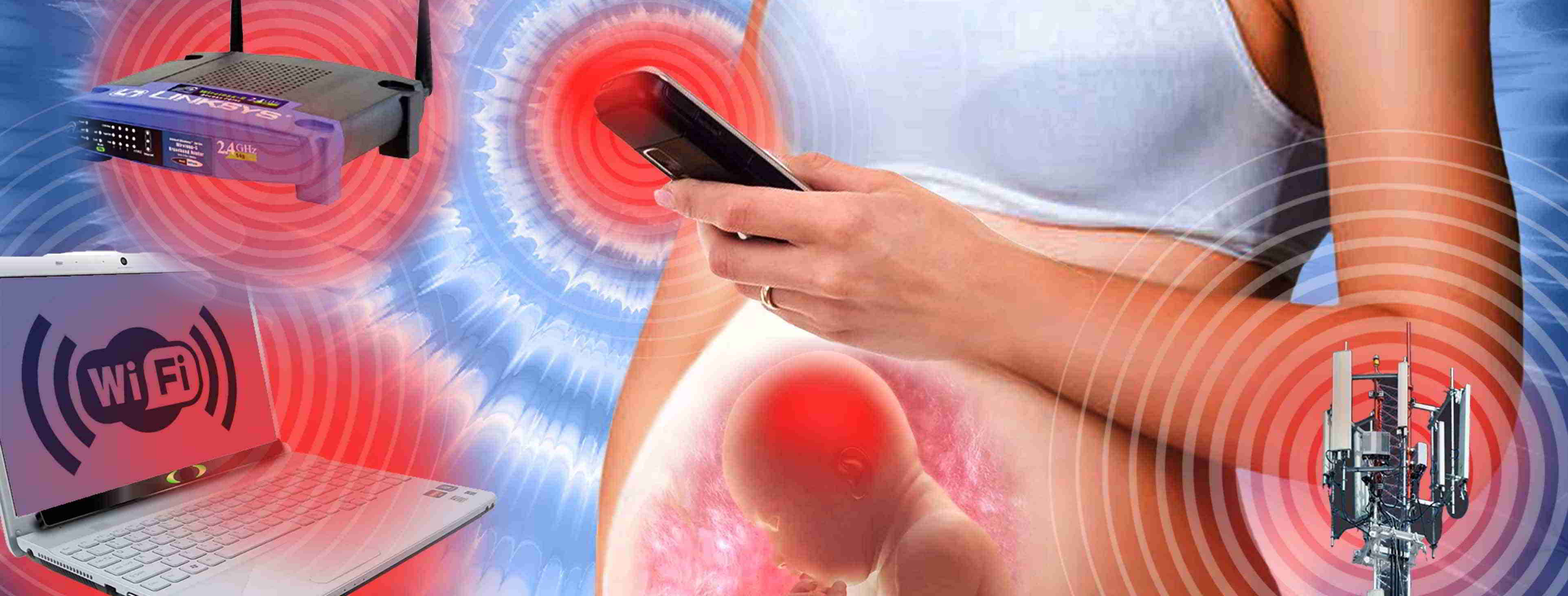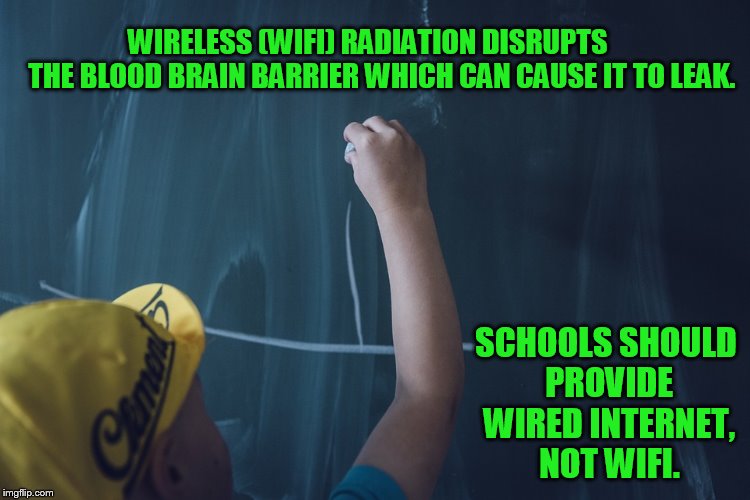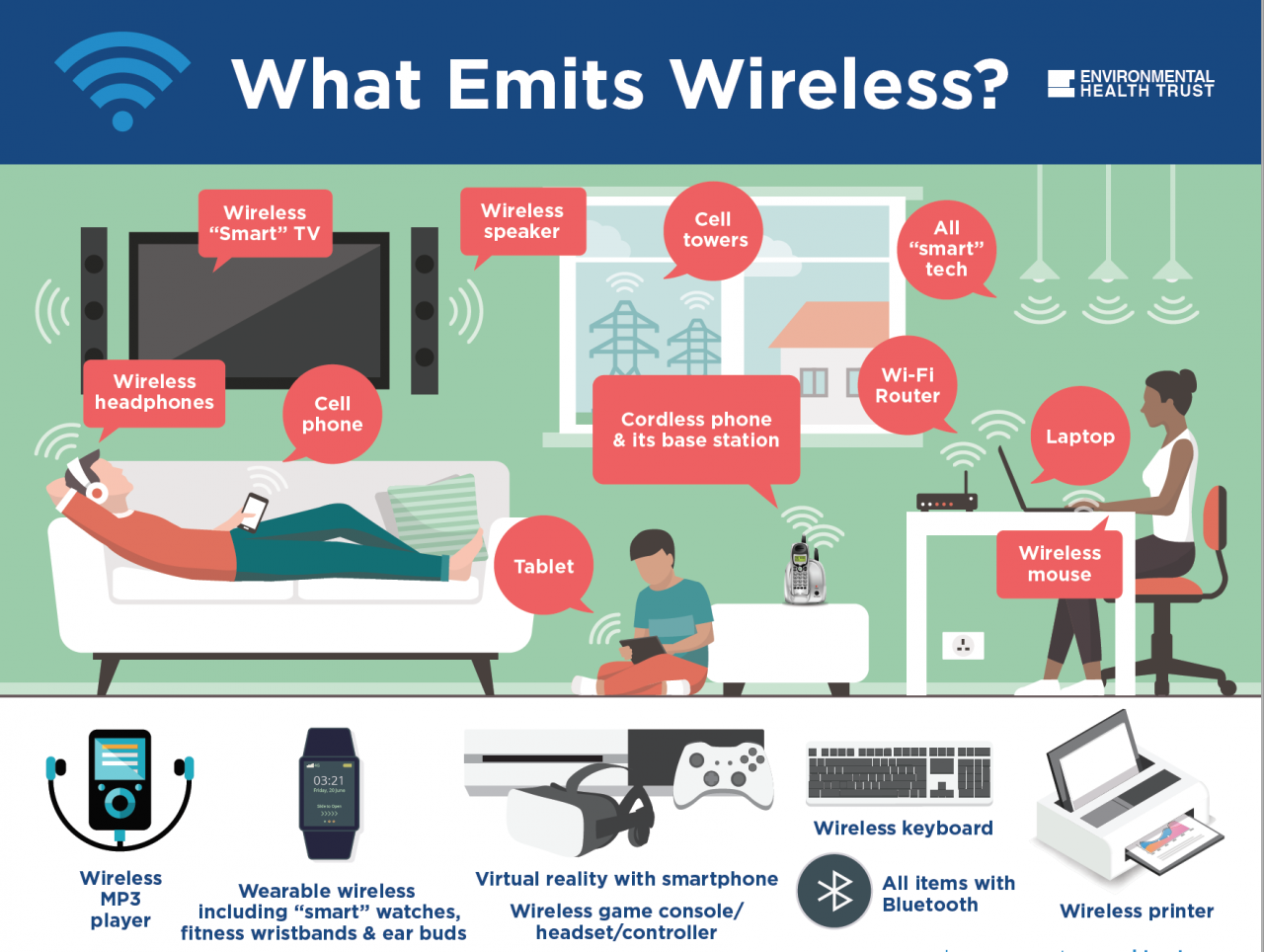This is what needs to happen. Every school, library, and public institution that is willfully exposing children to this noxious, life-destroying technology, needs to be sued, fined, and even imprisoned for what they have done.
Source Article Here
 By B.N. Frank
By B.N. Frank
You’ve probably heard about the American Embassy workers and their family members stationed overseas who have been afflicted by mysterious symptoms, illnesses, and brain injuries. Their condition is often referred to as “Havana Syndrome” and medical experts determined that this is likely caused by exposure to microwave energy (see 1, 2, 3, 4). Suspected cases of “Havana Syndrome” continue to be reported (see 1, 2, 3).
In the U.S. Electromagnetic Sensitivity (aka EMF Sensitivity) is a federally recognized disability. Because of that, those knowingly disabled by exposure ask for accommodation (see 1, 2). Some schools in the U.S. and worldwide have taken steps to reduce radiation emissions in their buildings by replacing Wi-Fi with hardwired internet. Those that haven’t are at risk for more legal claims.
From JD Supra:
The ABCs of EHS: What Schools Need to Know About Wi-Fi Sensitivity Claims
The last five years have seen an increase of litigation surrounding Electromagnetic Hypersensitivity Syndrome (EHS), also called Wi-Fi Sensitivity, that should be on the radar screen for schools across the country. This is because some have started to argue in courts that Wi-Fi Sensitivity is a disability that must be accommodated. What do you need to know about this troubling new trend?
What is EHS?
EHS has a host of symptoms that range from headaches and nausea to fatigue and rashes. These nonspecific symptoms are the most common among many diagnoses. However, the World Health Organization (WHO) has stated that there is no known “medical, psychiatric or psychological” cause for EHS, and there is disagreement in the medical community whether EHS is a real diagnosis. Some believe that the symptoms attributed to Wi-Fi Sensitivity are caused by underlying physical or psychological ailments.
While there may be no scientific basis for EHS, some doctors have stated that their patients’ belief that Wi-Fi triggers symptoms can actually cause real symptoms. And given the prevalence of electromagnetic waves in our everyday lives, it would be difficult – if not impossible – to pinpoint one specific place that caused any alleged symptoms.
Why Should Schools be Concerned?
Again, Wi-Fi is available in a multitude of locations today, from coffee shops to public transportation. WiFi is transmitted to and from computers, TVs, Bluetooth headphones and speakers, smartwatches, and of course your cell phone. These devices use radio frequency, which is a form of electromagnetic radiation. All of these devices are commonly found in school settings, especially as most educational institutions have rapidly added Wi-Fi capability to classrooms and all campus settings. Indeed, students often use laptops during class to conduct research or to complete assignments, teachers livestream lessons to remote learners, and school administrators use their smartphones to conduct business on a seemingly non-stop basis.
To the extent there is a risk from Wi-Fi, then, it would be higher in locations where there are dozens of laptops and routers working at the same time – and schools are just such a location. As a consequence, some public school systems have decided to use wired systems rather than Wi-Fi whenever possible.
What Does Federal Law Say?
The U.S. Access Board, a federal agency responsible for promulgating accessibility guidelines under Title III of the Americans with Disabilities Act (ADA), which covers private schools, has recognized that “electromagnetic sensitivities may be considered disabilities under the ADA.” Thus far, however, no federal court, however, has recognized EHS as a disability.
In 2017, the Seventh Circuit Court of Appeals (with jurisdiction over cases arising in Illinois, Indiana, and Wisconsin) acknowledged there is disagreement in the medical community whether EHS is a psychological or physical disorder. Notwithstanding the dispute, the court concluded the plaintiff had not provided any evidence he had an actual impairment – much less one that substantially limited him in any major life activity. Two years later, parents sued a Massachusetts boarding school for failure to accommodate their son’s EHS. The lower court accepted the student’s expert’s conclusion that the student’s symptoms matched those of an EHS diagnosis. However, since the parents could not ultimately prove that the school’s Wi-Fi caused their son’s symptoms, the court could not conclude the school could accommodate the student any more than it already had and ruled in the school’s favor.
California Decision Raises Red Flags for Schools
At least one court, however, has found that EHS can be a disability and ruled against an educational institution. Earlier this year, in fact, a California court held that a EHS was a protected disability in a case filed against a school. A teacher brought a failure to accommodate disability claim against the school district based on an alleged EHS diagnosis. In 2015, the district installed a Wi-Fi system in the school where the teacher taught. She attributed her chronic headaches, nausea, burning sensations to her skin, shortness of breath, and fatigue to the newly installed Wi-Fi system, and was diagnosed by her doctor with EHS.
The school sought to dismiss her claim arguing that EHS was not a protected disability under the ADA. The California Court of Appeal held that the California Fair Employment and Housing Act more broadly defines the term “disability,” and as such ruled that the teacher adequately pled her physical disability. By allowing her claim to proceed, the court could be sending a signal to schools in California – and across the country – that Wi-Fi Sensitivity is a matter for you to begin taking seriously.
Practical Tips
Here are three practical tips for you to consider as you navigate this new world of Wi-Fi Sensitivity.
-
Engage in the Interactive Process: You should not dismiss a request for accommodation based on an alleged EHS diagnosis. Just as with any formal or informal claim that someone needs assistance because of a medical impairment, you should go through the interactive process with that employee (or student). Importantly, the success of a claim for retaliation does not rely on whether the plaintiff is successful on their disability claim – so you could find yourself legally liable if you do not handle the accommodation request appropriately.
-
Document the Process: Make sure to record the steps of the interactive process. It is important to identify which accommodations are reasonable in your particular school setting. Of note, some claim that their EHS is triggered by things other than Wi-Fi, including LED or fluorescent light bulbs, cell phones, or even nearby cell phone towers. You may be able to accommodate problems caused by fluorescent light bulbs but not those caused by nearby cell phone towers. Others point to smart devices or wearables as the cause of their problems. It is important to document why it would be an undue burden to provide a specific accommodation related to whatever request is being made.
-
Do Not Over-Promise: In the California case mentioned above, the court identified that the school did not provide accommodations they had first agreed to but then rescinded. The school could have avoided much of the ensuing trouble if it had clearly made its ultimate position known earlier in the process. Make sure you clearly document any accommodations you will provide and follow through with any accommodations you agree to.
Unfortunately, most if not all common wireless devices and infrastructure emit high levels of harmful electromagnetic radiation (aka “Electrosmog”) and exposure can cause symptoms, illnesses, and injuries (see 1, 2). Sources include activity trackers and other wearables, cell phones, cell towers, “Smart” home appliances and security systems, utility “Smart” Meters (electric, gas, and water), and more.
Activist Post reports regularly about Wi-Fi, Electrosmog, and unsafe technology. For more information visit our archives and the following websites.
- Electromagnetic Radiation Safety
- Environmental Health Trust
- Physicians for Safe Technology
- Wireless Information Network
Become a Patron!
Or support us at SubscribeStar
Donate cryptocurrency HERE
Subscribe to Activist Post for truth, peace, and freedom news. Follow us on Telegram, HIVE, Flote, Minds, MeWe, Twitter, Gab, Ruqqus, and What Really Happened.
Provide, Protect and Profit from what’s coming! Get a free issue of Counter Markets today.



